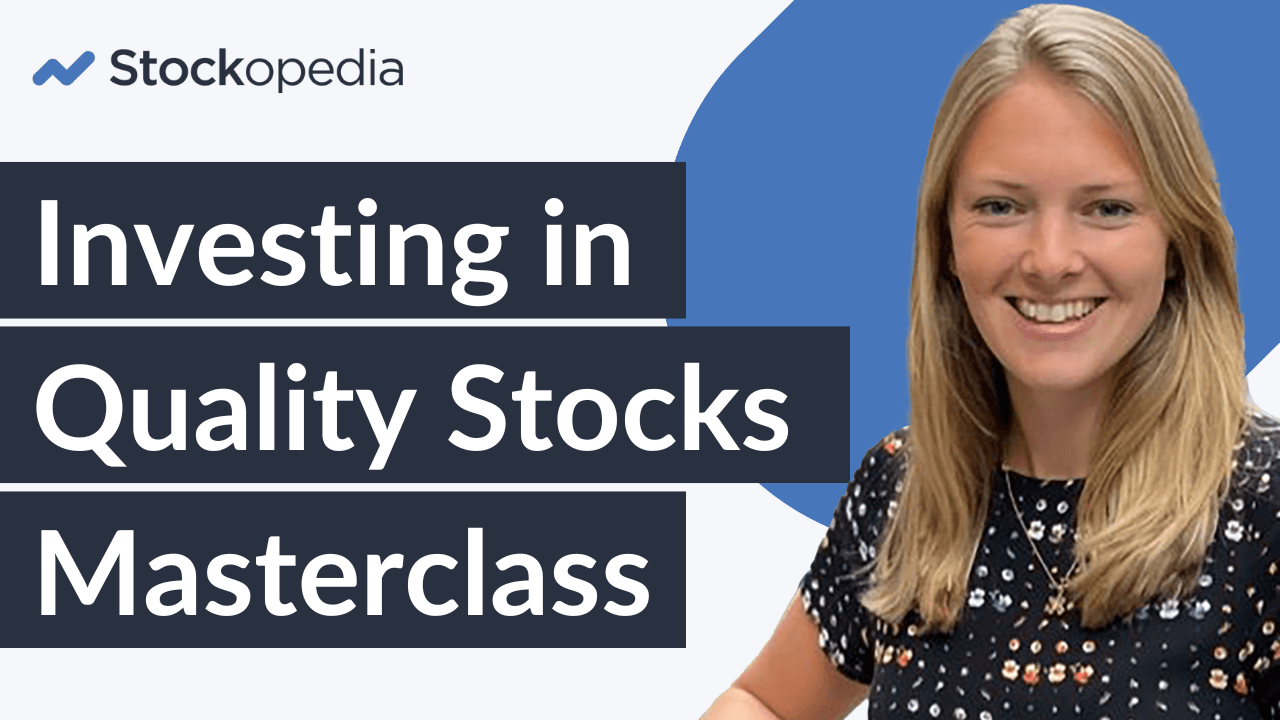Five simple portfolio building strategies
You’ve decided to build a stock portfolio. But you’re not quite sure where to start.
The UK’s FTSE All Share and AIM All Share indices contain around 1,000 stocks, in total. If you followed Warren Buffett’s research advice in a 1993 interview to “start with the A’s”, you might find yourself overwhelmed.
Buffett’s comments were made in a pre-internet age, where investors seeking stock ideas really did have to read through printed directories of financial data and company annual reports.
Today’s technology makes it much easier for individual investors to put into practice the investing techniques of Buffett and other successful investors. Services such as Stockopedia make it possible to filter and rank companies’ financial data in many different ways.
But the fundamentals of building successful portfolios haven’t really changed. Having a clear strategy remains a key requirement for serious investors.
Factors for success
Even when he relied on printed reports, Buffett was probably able to reject many companies he looked at after just a few minutes of reading. The reason for this is that, like most other top professional investors, he always knows what he is looking for.
Buffett’s original success was as a deep value investor. This meant buying shares in cheap, troubled businesses and profiting when they recovered. As his investment capital gradually outgrew this strategy, he shifted focus to buying good quality businesses at reasonable prices.
One common thread linking both of Buffett’s core investing strategies has been his use of factors. These are financial characteristics that have been proven over long periods to drive superior investment returns.
There are three core factors that have been shown to work over the long run:
Quality: strong profitability, good cash generation, competitive advantages, high market share.
Value: cheap, unloved and probably with some problems. But returns can be attractive when performance (or sentiment) improves.
Momentum: look for rising share prices and improving expectations. Shares may already be both popular and expensive, but will often keep rising anyway.
In the remainder of this article we’ll look at five investing strategies that use different combinations of these three factors as the starting point for building a portfolio.
We’ll also show how the StockRanks system – which scores shares for Quality, Value and Momentum – can be a powerful tool to help highlight the most probable situations.
#1: Quality compounders: the ultimate long-term investments
This strategy is all about finding the kind of high-quality companies that can be relied upon to keep performing well over many years. Buying quality compounders is perhaps the ultimate buy-and-hold strategy.
Building a portfolio of quality stocks requires a good understanding of the mechanics of value creation and a willingness to understand companies’ business models.
Key financial metrics here include return on capital employed, operating margin and free cash flow conversion.
You’ll be looking for highly profitable companies that are able to convert most of their profits into surplus cash each year, before reinvesting this cash to drive further growth.
Such companies can outperform over decades. But to reap the rewards of this strategy, you’ll need patience and the discipline to ride out periodic market crashes and other problems.
You’ll also need to be happy to pay the full price for your shares; such businesses rarely look cheap.
The reward for success could be a portfolio that requires very little activity and may quietly outperform the market for many years, without any drama.
StockRank screening tip: look for shares with a high Quality Rank above all else.
#2: Trending value: cheap and improving
This strategy is almost the polar opposite of the quality approach outlined above. Here, we are looking for stocks that are still cheap but are entering a period of strong growth.
Done well, a trending value strategy can deliver big capital gains relatively quickly. But it’s an active strategy that will require periodic trading and regular attention.
Finding new opportunities requires a reactive mindset, looking for cheap stocks whose performance is improving. Managing the portfolio is likely to need good discipline, pre-defined timeframes and a clear set of criteria for selling.
Key metrics here include the price-to-earnings ratio and relative strength. You’ll also be looking for evidence of a catalyst to kickstart growth. Examples might include a significant earnings upgrade or heavy director buying.
One risk worth noting with trending value is that the downside can be savage in a market crash, when momentum tends to get crushed. Expect a bigger drawdown in a market slump than you’d suffer with a more conservative portfolio.
StockRank screening tip: look for shares with high Value and Momentum Ranks.
#3: Contrarian quality: good and cheap
This strategy involves buying shares in good businesses when they’re out of favour (and cheap!). Some of Warren Buffett’s most famous investments have fallen into this category.
Buffett invested in banks after the great financial crisis. He bought Coca-Cola in 1988 when it was out of favour. He first invested in Apple in 2016, when the shares had fallen 30% in a year, and the market had not yet seen the potential of the tech group’s services business.
These are famous examples. But dig deeper and there are always opportunities to find good companies trading at relatively cheap valuations. Such stocks can provide handsome profits if their valuations later revert to more typical levels for a quality business.
Key metrics here might include return on capital employed and earnings yield (EBIT/EV). These provide a holistic view of the profitability and valuation of a whole company and can highlight good opportunities.
Contrarian stocks won’t necessarily be shares you can hold forever. There’s also a risk that some of them will turn out to be value traps – stocks that are cheap for a good reason.
Nevertheless, for investors who are happy to ignore popular opinion and do their own research, a contrarian quality strategy can be a very rewarding way to invest.
StockRank screening tip: look for shares with high Value and Quality Ranks.
#4: Adventurous Growth: quality and momentum
This strategy can be exciting and very rewarding when it’s successful. Investors pursuing adventurous growth are looking for good quality businesses that are still in their growth phase.
Companies that can deliver on this promise can sometimes deliver spectacular earnings growth as they benefit from improving profit margins and strong sales growth.
As they become more popular with investors, these businesses may also re-rate to much higher valuations. The end result can be a multibagger – a company whose share price rises by 100% or more.
Like the Trending Value strategy, you need to watch for the fallout when things go wrong. Slowing earnings growth or a strategic misstep can cause a brutal de-rating. But when Adventurous Growth goes well, it can go very well.
StockRank screening tip: look for shares with high Quality and Momentum Ranks.
#5: Quality, Value & Momentum: simply the best?
So far we’ve discussed strategies targeting stocks that offer some – but not all – of the three core factors, quality, value and momentum.
What about a strategy that targets all of them at once? Surely these would be the ideal stocks to own?
The StockRanks were designed to address this requirement. Each StockRank score combines scores for Quality, Value and Momentum. Shares that score well in all areas are labelled as Super Stocks in our taxonomy.
However, this doesn’t mean that these shares are perfect in all regards. Everyone is looking for cheap, good, growing businesses. As a result, they’re rarely cheap, good and growing all at the same time.
What the StockRanks do is highlight opportunities where many positive factors are on offer together.
There will probably still be trade-offs in some areas. But by building a diversified portfolio of highly-ranked stocks, we believe investors can maximise their chances of beating the market without having to accept excessive risk or volatility.
StockRank screening tip: look for shares with StockRanks of 80 or more.
Next steps
This was a short introduction to a selection of factor-driven investment strategies. More detail on these ideas and others is available in our in-depth strategy map guide.
In the coming articles in this portfolio management series, we’ll delve into some of the practical details of building a portfolio, covering topics such as how many stocks to hold, how to weight positions, and how to time your investments.

